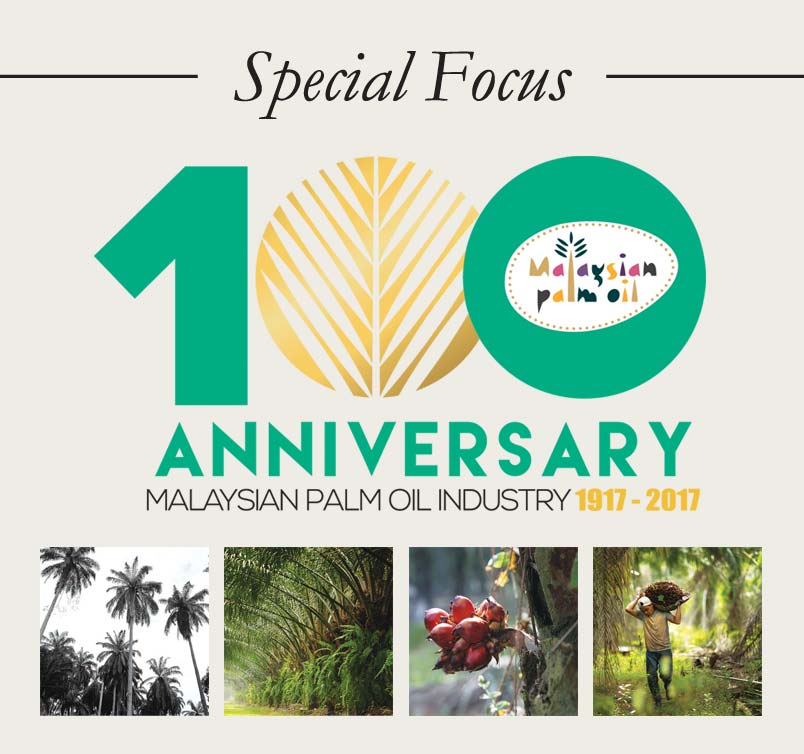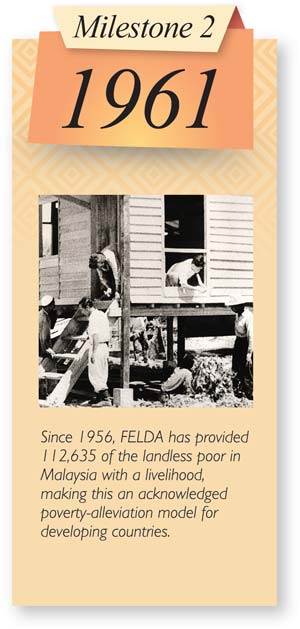




Large-scale planting of oil palm by Malaysia’s Federal Land Development Authority (FELDA) became a successful model as a poverty-eradication programme for developing countries.
After Malaysia gained Independence in 1957, the government faced a huge challenge in redistributing economic wealth among the people. While those in urban areas enjoyed a good quality of life, there was rampant poverty in rural areas. Expansion of agriculture was considered a major priority to bridge the gap and improve the livelihood of the rural poor. The government established FELDA to take on that formidable challenge through a policy of providing ‘land for the landless, jobs for the jobless’.
Initially, the small farmer land development scheme involved rubber cultivation, but progress was slow and the price was falling. The crucial need for crop diversification was soon realised – for an alternative cash crop that would be more viable and give faster returns on investments.
It was not until the oil palm was introduced in 1961 to settlers at the FELDA Taib Andak scheme that the pace of land development picked up. Each settler received eight acres planted with oil palm, two acres of subsidiary crops, usually fruit trees, and a house on a quarter-acre lot. By 1990, a total of 112,635 rural poor, of whom 80% were dependent on the oil palm, had found employment in FELDA schemes. Today, FELDA is a major player in the global oils and fats industry, accounting for more than 0.7 million ha of the oil palm planted area; and 3 million tonnes of crude palm oil production, the highest in the world.
Since 1990, FELDA has diversified to other economic ventures and has established several private corporate entities. The FELDA programme has since been acknowledged by the United Nations and the World Bank as a successful model of poverty alleviation for developing countries.